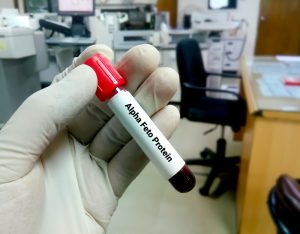Gonorrhoea is a sexually transmitted infection that infects both men and women. It causes infections in the genitals, throat and rectum and is common in those aged 15 to 25. Majority of women never experience any symptoms, but men are more likely to experience severe symptoms.
Epidemiology
Gonococcal infection in women is less common than chlamydial infections. Gonorrhoeal infections are especially high in endemic areas of Southeast Asia and in the sex worker population.
The detection and treatment of chlamydia and pelvic inflammatory disease (PID) control programmes, safe sex, elimination of gonococcal and chlamydial infection from the sex industry have decreased the incidence of gonorrhoeal infections over the years.
What causes gonorrhoea?
Gonorrhoea is caused by Neisseria gonorrhoea (gonococcus). It is closely related to Neisseria meningitides, a cause of bacterial meningitis. Neisseria gonorrhoea is a gram-negative non-spore forming bacteria that needs sexual contact before its spread between individuals.
Clinical Features
Gonorrhoea is transmitted by direct contact during oral, vaginal or anal sex. The organism perishes rapidly outside the human body and hence infections are not caught from towels or indirect contact.
Majority of patients are identified through screening. This is because infections of the oropharynx and rectum are usually asymptomatic.
In patients that present with a sexually transmitted disease, the doctor will conduct history taking that includes:
- History of any sexually transmitted diseases
- Past treatment for sexually transmitted diseases
- Symptoms or signs in sexual partners
- Contraception usage
- History of sexual assault
- Last menstrual period
Symptomatic infections usually develop within 2 to 7 days of exposure to the organism.
Typical symptoms are similar to chlamydia, but gonorrhoea tends to cause more symptoms. Men and women are also susceptible to sex-independent manifestations such as infection to the eye, rectum and pharynx during orogenital contact.
The most common site of infection in women is the endocervix, followed by the urethra, rectum and pharynx.
In women, the genitourinary symptoms include:
- Vaginal discharge
- Post-coital and/or inter-menstrual bleeding
- Pain passing urine (dysuria)
- Increased menstrual volume
Vaginal discharge from cervical inflammation (endo-cervicitis) is the most common sign of gonorrhoea and produces a thin, purulent and slightly odorous secretion.
In more severe cases, infection can progress to cause pelvic inflammatory disease, in proximity to a menstrual period. PID occurs in up to 20% of infected women and includes symptoms such as:
- Pelvic pain
- Lower abdominal pain
- Increased vaginal or urethral discharge
- Cervical motion tenderness
- Adnexal tenderness
Complications
A complication of undetected infection can ascend from the cervix to infect the endometrium (lining of the uterus). This can lead to the development of acute pelvic inflammatory disease, causing permanent tubal blockage that risks ectopic pregnancy or infertility.
In males, symptoms are more severe and include classic symptoms or urethritis (infection of the urethra):
- Purulent penile discharge, classically yellow-grey-white, possibly tinged with blood
- Pain passing urine (dysuria)
- Inflammation of the urethral meatus and glans penis
- Inflammation or swelling of the foreskin
- Scrotal pain
- Sore throat
- Rectal discharge or pain
The first noticeable symptom for men is a burning sensation while passing urine and progressive symptoms that include increased frequency of passing urine and purulent (pus-like) discharge from the penis.
Diagnosis
Test samples are usually taken from urethra and endocervix and rectum, sometimes rectum or conjunctiva. Upon presentation of urethritis, tests for both gonococcal and chlamydial infections are usually conducted.
NAAT Testing
Nucleic acid amplification (NAAT) testing is a non-culture test that detects the genetic material (DNA) of gonorrhoea bacteria. It is considered the gold standard for gonorrhoeal infections. Diagnosis can be made using urine or swab taken from the site of infection, with the advantage of the convenience of testing.
Gram stain
Organisms are found within white blood cells (polymorphs) and have gram negative staining patterns: pink, diplococci within the cytoplasm of white cells. Gram staining can accurately diagnose urethritis with a degree of accuracy of 90% and 75% for cervicitis from a urethral smear.
Management
Genital gonococcal infections must always be treated. Females with suspected sexually transmitted infections are tested for pregnancy so that medications not approved for pregnancy are not administered.
Uncomplicated gonococcal infections of the cervix, urethra and rectum are mostly treated by a singular injection of the antibiotic called ceftriaxone intramuscularly. Ceftriaxone is safe in pregnancy and resistance to it is uncommon.
Gonococcal infections of the anal canal or throat requires ceftriaxone. As with chlamydial infections, it is wise to consider offering testing for all the common STIs, including blood borne infections, especially if the patient practices high-risk sexual behaviours.
Identification and treatment of previous and current sexual partners are imperative to prevent the spread of transmission and reinfection.
Conclusion
Treatment failure mainly results from reinfection from sexual partners who have not been treated. To minimise transmission of gonorrhoea, patients should refrain from sexual activity at least two weeks after treatment and screening after three months post-treatment is highly encouraged.













